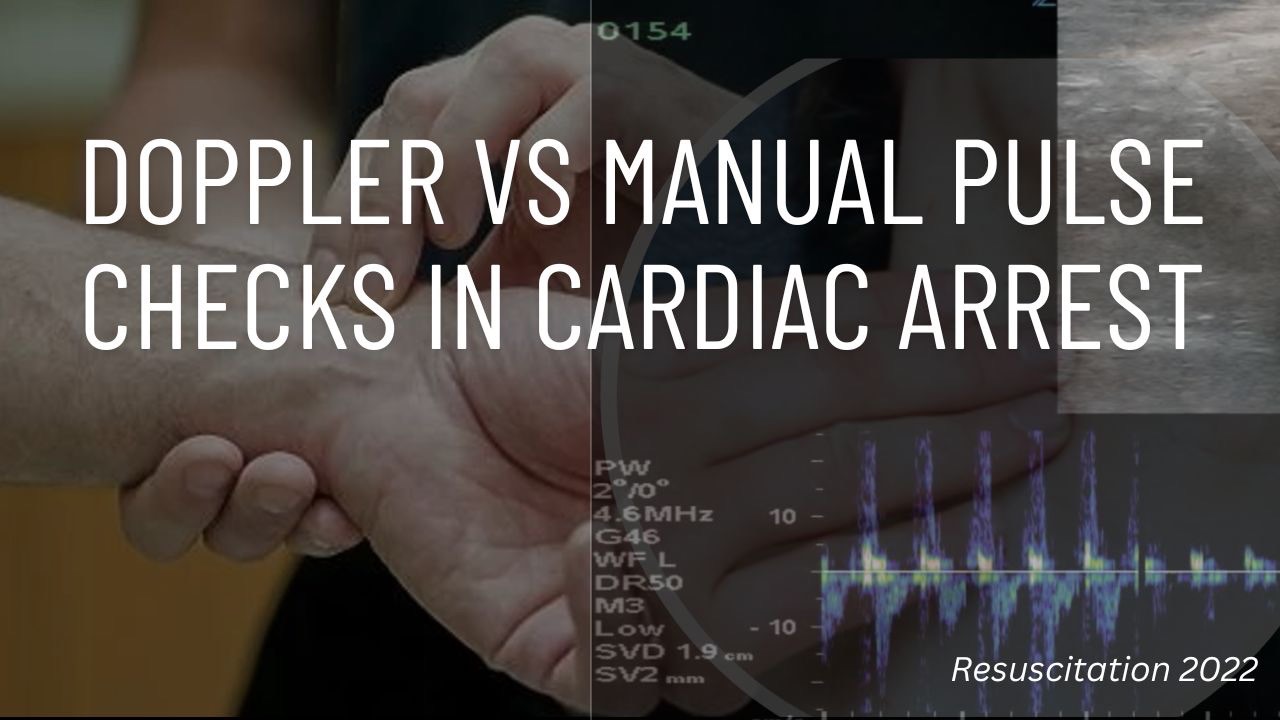The Study (10 minute read)
Cohen AL et al. Femoral artery Doppler ultrasound is more accurate than manual palpation for pulse detection in cardiac arrest. Resuscitation 2022;173: 157-165.
When we are in the ACLS resuscitation algorithm, following each cycle of compression, we need to perform a rhythm/pulse check. However this can be a challenge for many reasons including: body habits, room temperature, experience and situational stress.
Doppler ultrasound can not only detect a pulse, but can also read peak systolic velocity (PSV), which correlates with systolic blood pressure (in non-cardiac arrest patients).
This study had two objectives:
- To assess the accuracy of femoral artery pulsed-wave Doppler ultrasound in comparison to manual palpation to detect any pulse with an arterial line waveform for patients in cardiac arrest.
- To determine whether peak systolic velocity (PSV) on Doppler ultrasound accurately detects a pulse with an adequate blood pressure needed for perfusion, which we defined as a SBP > 60 mmHg.




